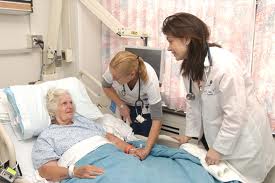A stroke is a kind of brain injury that may happen in various areas of the brain. It is more common in older adults, who are about 65 years-old and above. There are two types of stroke—ischemic and hemorrhagic. Ischemic stroke is when the blood vessels are blocked and oxygenated blood is prevented from reaching the brain and this causes damage. Hemorrhagic stroke is when the blood vessels in the brain rupture or burst because of fragility or extreme high blood pressure. This causes damage to the brain tissues because the oxygenated blood does not circulate in the brain anymore.
If you have high blood pressure, high levels of cholesterol, diabetes, an unhealthy lifestyle, or a smoking habit, you are at a very high risk of having a stroke. Someone is about to have a stroke when there is a weakness on one side of the body’s arm, leg, or face; sudden confusion and drooling; trouble with vision; trouble with coordination and balance; and sudden headache. You could be treated with aspirin, anticoagulants, or surgery. But when a stroke happens, it happens. And after a stroke, what can you expect? Here are some of the things that stroke victims usually experience after their attack:
1. Aphasia
 After a stroke, aphasia is most likely to occur. It is having the difficulty to utilize and understand words. Stroke victims find it very hard to understand what others say, read, talk, write, and even calculate. It is not the same for all who survived stroke. Some may have mild aphasia and others might have severe episodes.
After a stroke, aphasia is most likely to occur. It is having the difficulty to utilize and understand words. Stroke victims find it very hard to understand what others say, read, talk, write, and even calculate. It is not the same for all who survived stroke. Some may have mild aphasia and others might have severe episodes.
2. Exercise and diet modification
 When a patient survives a stroke, lifestyle changes have to be done. This includes physical exercise and diet modification. After a stroke, your diet should be made up of fruits, vegetables, low0-fat dairy and meat, rich in Folate, B6 and B12. Homocysteine levels in your blood should not increase. When this happens, B6, B12, and folate decrease. Then, you are prone to heart and vascular diseases. Homocysteine levels may be influenced by genetics and aging. So, you must increase the levels of folate, B6, and B12 to counter this.
When a patient survives a stroke, lifestyle changes have to be done. This includes physical exercise and diet modification. After a stroke, your diet should be made up of fruits, vegetables, low0-fat dairy and meat, rich in Folate, B6 and B12. Homocysteine levels in your blood should not increase. When this happens, B6, B12, and folate decrease. Then, you are prone to heart and vascular diseases. Homocysteine levels may be influenced by genetics and aging. So, you must increase the levels of folate, B6, and B12 to counter this.
3. Mental Disorders
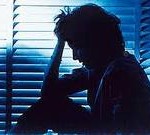 Depression, PBA (pseudobulbular affect), and extreme anxiety may occur after a stroke. Proper counseling and medications allow you to surpass these mental disorders. Your family’s support can contribute a lot in this situation.
Depression, PBA (pseudobulbular affect), and extreme anxiety may occur after a stroke. Proper counseling and medications allow you to surpass these mental disorders. Your family’s support can contribute a lot in this situation.
4. Memory Loss
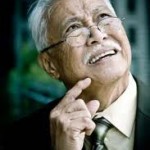 Yes, after a stroke, you most probably will have memory loss. This can be helped by practicing memory exercises and having reminder notes all the time.
Yes, after a stroke, you most probably will have memory loss. This can be helped by practicing memory exercises and having reminder notes all the time.
5. Paralysis and spasticity
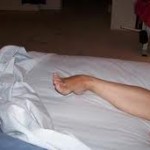 After a stroke, there might be a blockage of communication between the brain and the muscles. This stops the voluntary muscles from moving, namely the muscles in your extremities. Spasticity is when the muscles move uncontrollably in the arms and legs. Spasticity can be corrected by stretching, oral medications, injections, surgery and intrathecal medications.
After a stroke, there might be a blockage of communication between the brain and the muscles. This stops the voluntary muscles from moving, namely the muscles in your extremities. Spasticity is when the muscles move uncontrollably in the arms and legs. Spasticity can be corrected by stretching, oral medications, injections, surgery and intrathecal medications.
6. Neglect
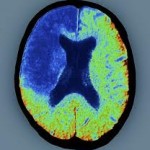 When a person has stroke, that person usually neglects the particular part of the body that was affected after a stroke. As a result, they don’t perceive the world the same way as before.
When a person has stroke, that person usually neglects the particular part of the body that was affected after a stroke. As a result, they don’t perceive the world the same way as before.
7. Pain
 The patient experiences various types of pain after a stroke. Here are the common ones: constant pain; pain on the stroke-affected side; pain on the torso, leg, arm, and face; aching pain; sharp pain; itching pain; burning pain; central pain; localized pain; and mechanical pain in joints. Pain can be managed with medications and by pain-management professionals who are always ready to help.
The patient experiences various types of pain after a stroke. Here are the common ones: constant pain; pain on the stroke-affected side; pain on the torso, leg, arm, and face; aching pain; sharp pain; itching pain; burning pain; central pain; localized pain; and mechanical pain in joints. Pain can be managed with medications and by pain-management professionals who are always ready to help.
8. PBA (Pseudobulbar Affect)
 This occurs after a stroke and is also known as a pathologic lability or emotional incontinence. This is when you show emotions that are not appropriate in the given situations.               Uncontrollable emotions may also come out and with these, the patient may be embarrasses to be part of gatherings or any social event.
This occurs after a stroke and is also known as a pathologic lability or emotional incontinence. This is when you show emotions that are not appropriate in the given situations.               Uncontrollable emotions may also come out and with these, the patient may be embarrasses to be part of gatherings or any social event.
9. Sexuality
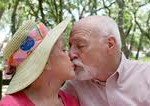 After a stroke, the patient usually has difficulty going back to the sexual routine before the onset of the stroke. The patient’s partner is usually involved in this. Both should make sure that they communicate well. They should be able to re-orient themselves to what makes their sexual relations interesting. They should relax and enjoy sex again to get things back to normal.
After a stroke, the patient usually has difficulty going back to the sexual routine before the onset of the stroke. The patient’s partner is usually involved in this. Both should make sure that they communicate well. They should be able to re-orient themselves to what makes their sexual relations interesting. They should relax and enjoy sex again to get things back to normal.
10. Vascular Dementia
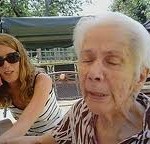 This is the loss of the ability to think. The patient’s brain was too damaged already because of the stroke that the brain cells cannot be used anymore. Activities of daily living could not be performed as well. There is confusion, memory loss, speaking problems, inability to organize, inability to calculate, difficulty to visually orient, and inability to pay attention, among others.
This is the loss of the ability to think. The patient’s brain was too damaged already because of the stroke that the brain cells cannot be used anymore. Activities of daily living could not be performed as well. There is confusion, memory loss, speaking problems, inability to organize, inability to calculate, difficulty to visually orient, and inability to pay attention, among others.
The stroke patient should be very well taken care of after the stroke. This will help the patient get re-introduced into society once again. Coordinate with your physician on whatever concerns that you may have with regard to this matter.
